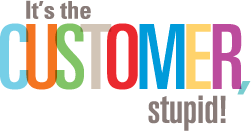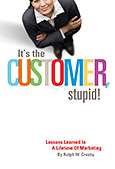Overcoming The “It’s Too Big” Marketing Barrier
When marketing to spur action such as donating money or volunteering, you can run into significant barriers getting people to support big ideas – such as ending childhood hunger or eradicating poverty. The reason: we are less likely to feel compassion or contribute dollars when faced with an issue that is so large and seemingly insurmountable.
Crosby Marketing’s Advocacy & Social Marketing practice leader, Jeff Rosenberg, explains that “big numbers or a big problem can cause us to become paralyzed by analysis – or what scientists call psychophysical numbing.”
Jeff explained how to overcome this paralysis in Philantopic, a blog of the Philanthropy News Digest:
The trick in social marketing (i.e., applying marketing principles in service to the greater good) is to tap into this feeling of being connected with a “one” while challenging your potential supporters to think more broadly about social change. How do we motivate people to pursue big goals and meaningful change when the research makes it clear that “big” can be a disincentive?
There are several ways, actually:
Telling powerful personal stories. Let stories of individuals add up to an overarching story about the bigger goal. Malaria No More currently has a beautiful Web site, the Power of One, that’s a great example of this approach: “Get a closer look at our first country of impact, Zambia, and the sassy, smart, irrepressible kids we’re striving to keep happy and healthy. Turn the volume up — you’re helping us get closer to a world where no child has to die from a mosquito bite!” The organization has a big goal: dispensing three million malaria treatments in Zambia and ending malaria as a cause of child mortality. But the words, photos, and videos on its site never let you lose sight of the fact that you are helping one child at a time.
Giving people do-able actions that support big, transformative impact. When asking members of the public to take action, we typically try to focus on specific, non-divisible behavior. It’s a way of giving people something they can do that is both manageable and effective in advancing progress toward achieving the larger goal. For example, the U.S. Department of Agriculture is leading the fight against invasive species — non-native insects that, when inadvertently introduced into a new region, can wipe out forests and crops. Our team at Crosby developed a public education campaign for USDA that encourages people to “leave hungry pests behind” and urges them to take a few simple actions like buying firewood where they burn it to avoid spreading tree-killing insects.
Tapping impactful and relevant motivators. It’s critically important to invest in marketing research to learn what motivates your target audiences. At Crosby, we test messaging by constructing a series of statements and supportive points, each grounded in a different psychological motivator — social norming, loss aversion, deviance avoidance, and so on — to learn how we can communicate about an issue in a way that resonates with and motivates people. We are working with the Wallace Foundation, for example, on a demonstration project/study to determine the impact that summer learning programs have on educational outcomes in urban communities. In recruiting parents and children for the project, however, we found that messaging grounded in social norms failed to motivate the parents to whom we spoke. The majority of those parents were low-income members of minority populations, and any time we couched messaging in the context of their community, they felt we were stigmatizing them. In contrast, they responded positively to messaging which reinforced the sense that they have the power to affect their own children’s future. Using the latter approach, we were able to help each participating school district exceed its recruitment goal.
Promoting meaningful consumer engagement. Don’t just communicate with your audience, engage your audience. “Content marketing” refers to the strategic utilization of sharable content in a variety of formats — from social media posts to infographics to video assets — to create relationships with target audiences. Few do it as well as charity: water. Explore the organization’s site and you’ll find videos, an interactive map of completed projects, reports detailing successes (and, yes, some failures), and numerous opportunities to meet the people who work there. Charity: water understands that building relationships is what creates longtime supporters and donors — lots of them.
As Jeff points out, applying these marketing principles to “big” issues and ideas will help achieve big results.
###

 Businesses often are started by entrepreneurs with an idea, a product or service, or an expertise. Many of them fail, not because the idea or product isn’t good, but because their attention is overwhelmingly directed internally – e.g., what goes into the product – when they should focus externally, always reminding themselves:
Businesses often are started by entrepreneurs with an idea, a product or service, or an expertise. Many of them fail, not because the idea or product isn’t good, but because their attention is overwhelmingly directed internally – e.g., what goes into the product – when they should focus externally, always reminding themselves:
